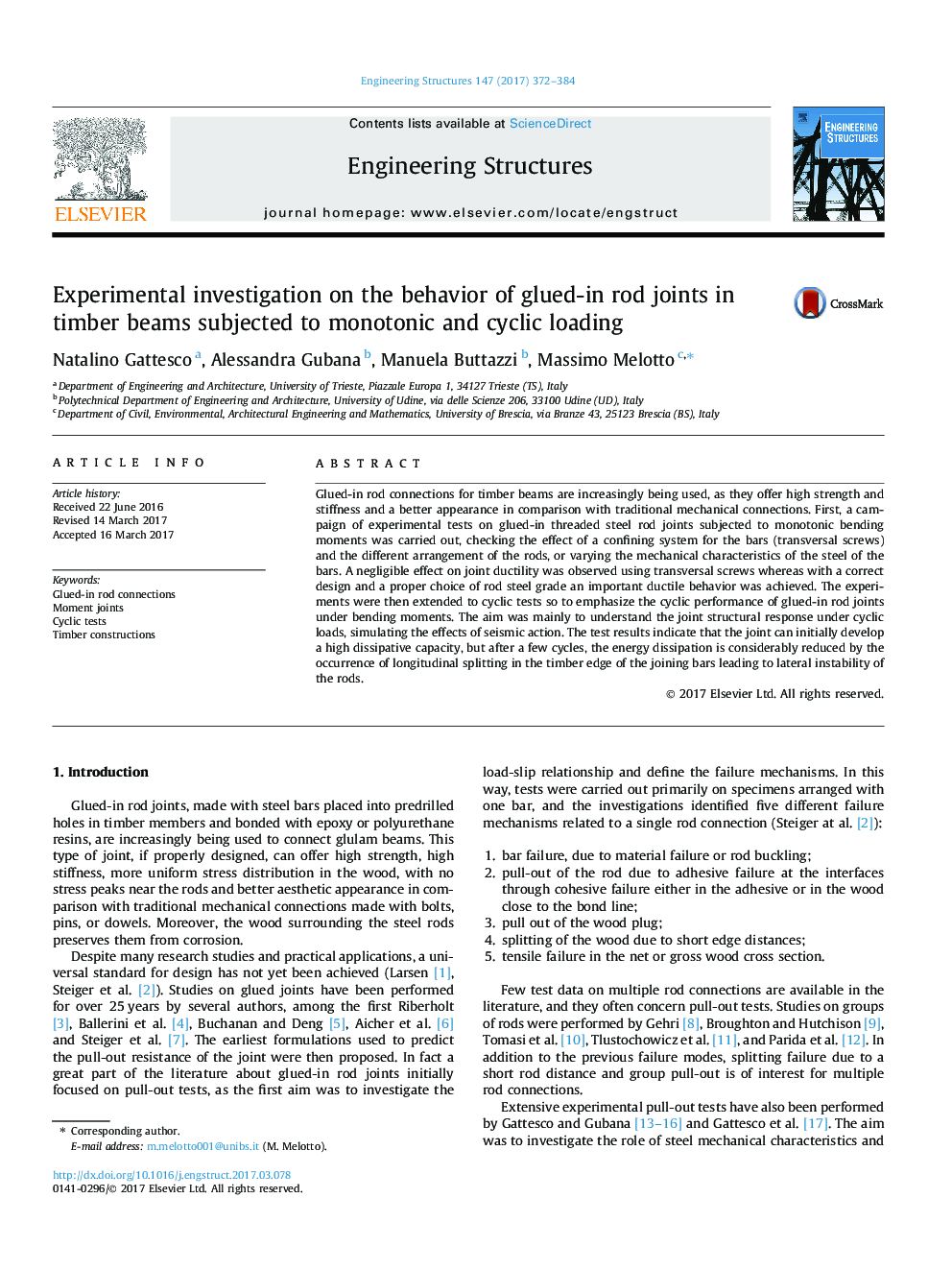| Article ID | Journal | Published Year | Pages | File Type |
|---|---|---|---|---|
| 4919918 | Engineering Structures | 2017 | 13 Pages |
Abstract
Glued-in rod connections for timber beams are increasingly being used, as they offer high strength and stiffness and a better appearance in comparison with traditional mechanical connections. First, a campaign of experimental tests on glued-in threaded steel rod joints subjected to monotonic bending moments was carried out, checking the effect of a confining system for the bars (transversal screws) and the different arrangement of the rods, or varying the mechanical characteristics of the steel of the bars. A negligible effect on joint ductility was observed using transversal screws whereas with a correct design and a proper choice of rod steel grade an important ductile behavior was achieved. The experiments were then extended to cyclic tests so to emphasize the cyclic performance of glued-in rod joints under bending moments. The aim was mainly to understand the joint structural response under cyclic loads, simulating the effects of seismic action. The test results indicate that the joint can initially develop a high dissipative capacity, but after a few cycles, the energy dissipation is considerably reduced by the occurrence of longitudinal splitting in the timber edge of the joining bars leading to lateral instability of the rods.
Keywords
Related Topics
Physical Sciences and Engineering
Earth and Planetary Sciences
Geotechnical Engineering and Engineering Geology
Authors
Natalino Gattesco, Alessandra Gubana, Manuela Buttazzi, Massimo Melotto,
